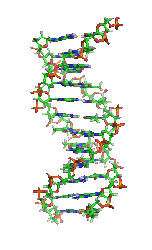Posted: Thursday, March 12, 2015 7:08 PM
UCLA stem-cell researchers have shown that a novel stem-cell gene therapy method could one day provide a one-time, lasting treatment for the most common inherited blood disorder in the U.S. sickle cell disease. Publishedin the journal Blood, the study outlines a method that corrects the mutated gene that causes sickle cell disease and shows, for the first time, the gene correction method leads to the production of normal red blood cells. The study was directed by renowned stem cell researcher and UCLA Eli and Edythe Broad Center of Regenerative Medicine and Stem Cell Research member, Dr. Donald Kohn.
People with sickle cell disease are born with a mutation in their beta-globin gene, which is responsible for delivering oxygen to the body through blood circulation. The mutation causes blood stem cellswhich are made in the bone marrowto produce distorted and rigid red blood cells that resemble a crescent or sickle shape. Consequently, the abnormally shaped red blood cells do not move smoothly through blood vessels, resulting in insufficient oxygen supply to vital organs. Anyone can be born with sickle cell disease, but it occurs more frequently in African Americans and Hispanic Americans.
The stem-cell gene therapy method described in the study seeks to directly correct the mutation in the beta-globin gene so bone marrow stem cells then produce normal, circular-shaped blood cells that do not sickle. The fascinating gene correction technique used specially engineered enzymes, called zinc-finger nucleases, tocut out the mutated genetic code and replace it with a corrected version that repairs the beta-globin mutation.
For the study, bone marrow stem cells donated by people with the sickle cell gene mutation were treated in the laboratory with the zinc-finger nucleases enzyme cutting method.Kohn and his team then demonstrated in mouse models that thecorrected bone-marrow stem cells have the capability to replicate successfully. The research showed that the method holds the potential to permanently treat the disease if a higher level of correction is achieved.
This is a very exciting result,said Dr. Kohn, professor of pediatrics atUCLAs David Geffen School of Medicine, professor of microbiology, immunology and molecular genetics in Life Sciences at UCLA, member of the UCLA Childrens Discovery and Innovation Institute at Mattel Childrens Hospital and senior author on the study. It suggests the future direction for treating genetic diseases will be by correcting the specific mutation in a patients genetic code. Since sickle cell disease was the first human genetic disease where we understood the fundamental gene defect,and since everyone with sickle cell has the exact same mutation in the beta-globin gene, it is a great target for this gene correction method.
To make the cut in the genetic code, Dr. Kohn and his team used zinc-finger nucleases engineered by Sangamo BioSciences, Inc., in Richmond. The enzymes can be designed to recognize a specific and targeted point in the genetic code. For the study, scientists at Sangamo BioSciences engineered the enzymes to create a cut at the site of the mutated genetic code that causes sickle cell disease. This break triggered a natural process of repair in the cell and at the same time, a molecule containing the correct genetic code was inserted to replace the mutated code.
The next steps in this research will involve improving the efficiency of the mutation correction process and performing pre-clinical studies to demonstrate that the method is effective and safe enough to move to clinical trials.
Symptoms of sickle cell disease usually begin in early childhood and include a low number of red blood cells (anemia), repeated infections and periodic episodes of pain. People with sickle cell disease typically have a shortened lifespan of just 36-40 years of age. The disease impacts more than 250,000 new patients worldwide each year. The only cure currently available for sickle cell disease is a transplant of bone marrow stem cells from a matched sibling, but matches are rare or can result in rejection of the transplanted cells.
This is a promising first step in showing that gene correction has the potential to help patients with sickle cell disease, said Megan Hoban, a senior graduate student in microbiology, immunology and molecular genetics and first author on the study. The study data provide the foundational evidence that the method is viable.
Go here to read the rest:
UCLA Research Shows Promising Method For Correcting Genetic Code To Treat Sickle Cell Disease
